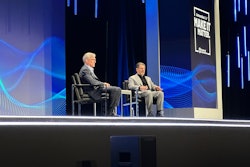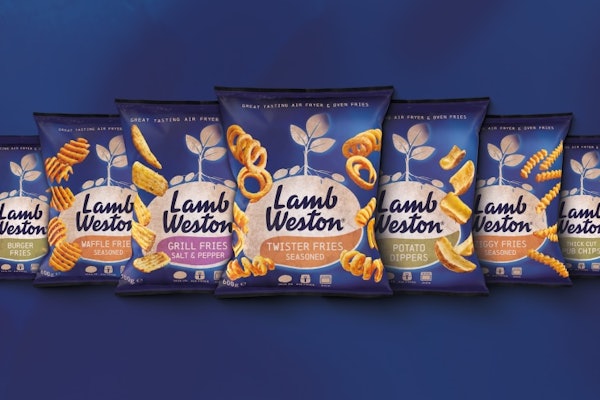
At the recent AIPIA & AWA Smart Packaging Congress in Amsterdam, speakers got to the heart of the potential of smart packaging to connect with consumers, collect actionable brand data, speed the creative process, and more. Following are 10 quotes that epitomize some of their insights.
1. On the topic of the use of on-pack QR codes:
“I would love to actually launch a European law that forbids to link to your company website. And I think as brands and service providers here, we should swear that we’ll never do that because that really hurts the capability and the vision of smart packaging. It should be to so much more than just the company website.”
–Güneri Tugcu, global director partnerships and business development, connected merchandise, r-pac Europe sarl
2. On the topic of Lipton’s on-pack QR code strategy:
“I am hoping we can partner up and have some fruitful discussions together about the different challenges we have right now. I’ve identified four. The first one is around supply chain integration. So ensuring product authenticity and trustability demands innovation. We are right now exploring technologies like blockchain to create a transparent supply chain, and we need technology partners to help us develop scalable and secure solutions. Accessibility—connected packaging must be inclusive. So from product guides to dynamic text, we need support in making content accessible to everyone, including consumers with visual impairments. Sustainability—advancing technology without compromising sustainability is critical. … And finally, encouraging those repeat scans. Building long-term engagements requires a creative approach to keep consumers returning for more. So loyalty programs, dynamic content, and fresh incentives are areas where technology can shine. So here’s my challenge to you … will you join us in shaping the future of connected packaging?”
–Alix Courdier, global head of marketing technology & data, Lipton Teas and Infusions
3. On the question of what is smart packaging:
“So smart packaging, connected packaging, I think it’s all about giving consumers, brand producers, [and] packaging producers that additional information that you cannot find on a product. I think that’s where active packaging, also intelligent packaging, makes the combination of smart packaging, and it always will be a combination of technology that we’ll see.”
–Inge Fleuren, global RFID product solutions manager, Checkpoint Systems
 | Read this related coverage from the AIPIA & AWA Smart Packaging Congress, “Digital Display Labels Set to Transform the Clinical Supply Chain” |
4. On the question of what’s driving interest in smart packaging for brands:
“The fun use cases are all about getting incremental revenue. We all want that, right? But for us, we are faced with probably the same thing that all of you have to deal with, which is a huge cloud of cynicism, mistrust, and disbelief as well as fear, uncertainty, and doubt. So in that rather unpleasant climate, what we are finding is that cost savings is the first step. It’s the way that’s certainly working for us. And I don’t think what works for us will work with everyone else. But we have this, we call it ambient technology and ambient intelligence, ambient IoT, which is basically battery-free Bluetooth, and already anyone that’s heard that for the first time is probably scratching their heads and like, ‘Battery free, it can’t be. It’s a con.’ And so when you have to get through that pitch and then explain how you’re going to acquire a new customer or get more money from your existing customers, for us, it’s just really, really hard work.”
–Steve Statler, chief marketing officer, Wiliot
5. On the topic of how standards will drive connected packaging:
“I just want to correct one thing. I don’t love standards. I feel like they’re necessary, and they’re necessary to basically boost big ideas and make them happen at large scale, and I think that’s what it does. And ultimately standardization like Digital Link is an opportunity for brands to de-risk their investment. We’ve been putting web identities on products for close to 15 years, 20 years almost now. But we did that in a proprietary way for a long time, and what that means is that it’s a big risk, and as brands are deploying at very large scale using proprietary technologies, it’s a risk that standards also have the power to de-risk and to help brands to move from one option to another and to really have a good long-term strategy versus just a one-off campaign.”
–Dominique Guinard, vice president of innovation, Digimarc
6. On the topic of how NFC labels can be used on prescription packaging:
“NFC technology can connect the patient to your drug, your environment. The patient is going to be able to connect with you directly. So we are looking at a new relationship between the patient and the pharma company. You’re going to improve the patient outcomes because the more you communicate in a two-way [relationship] and you can receive feedback, you can send eventually a different treatment. So it’s going to be very useful for having the direct link to the patient. And eventually also the treatment effectiveness will be collected for real-time data. AI can also get use of those data to add more analysis and eventually tailor the next treatment to the patient needs.”
–Frederic Vicentini, senior business manager development RFID EMEA, NXP Semiconductors
7. On the question of what advice you would give a brand just starting their smart packaging journey:
“You’ve just got to start. It doesn’t matter where you start. You can start on something on the supply chain—you get supply chain insights. You can start on the consumer engagement side of the house. You can start where systems aren’t integrated and all you get is a better experience that explains the origin of a product, for example. But I think those organizations that start now can start to learn a whole lot more than organizations that don’t begin that journey immediately. So for me, you’ve just got to start. It doesn’t matter where, just make that first step that makes sense for your organization.”
–Michael Sher, CEO, Tapwow
8. On the topic of the impact of connected packaging:
“We often find lots of presentations with lots of details about food waste or about sustainability or about creativity or about traceability and all of that. And the opportunity we have is in actual fact so much bigger than any of those things individually. It is that connected packaging is the biggest thing that’s happened to brands since the mobile internet. The reason is because it is the mobile internet, and it’s utterly amazing that the ability to connect with known consumers at the point of consumption is available. That’s really the reason I started a connected packaging business. I saw an example by Nestle with a QR code on a Kit Kat about eight, nine years ago. I said, ‘Can you do that?’ I said, “Show me the numbers.’ I looked at the numbers. Oh s**t, that’s going to be massive one day, and every brand will be able to talk to its own audience about anything it wants at the point of consumption without paying Mr. Google or Mr. Facebook a penny just for the marginal cost of printing and get his device in the hands of consumers. It’s gold dust.”
–Paul Simonet, founder, Experience is Everything
 | Read this related coverage from the AIPIA & AWA Smart Packaging Congress, “Paperization Extends to Smart Packaging” |
9. On the topic of advice to brands on implementing 2D codes on packaging:
“The one thing that we often say to customers is don’t think about the data elements going forward. Think about what you’re trying to achieve and work back because then the code will build itself. So don’t go, ‘Well actually, I’m going to put this, this, and this into the code, and then we’ll see what happens.’ So think about those different groups that you are dealing with. Think about how they might interact to all the different stakeholders and what they might want to do with it.”
–Craig Stobie, director - global sector development, Domino Printing Sciences
10. On the topic of the impact of AI on packaging design:
“AI is massively impacting everything, let’s get that out there. If it’s a cost-saving exercise, which it generally is, it’s going to happen. Why would I not want to take end-to-end design all the way through to print press files automated? Can I do that today? Yes. Will a large company like some of my former employees [large CPG] roll it out straight away. Not yet, but they will do eventually. But the savings are there, the time, the arguments that you’ve made, it’s already happening. So if you are a brand or retailer not using AI, you’re losing already. You should have been embracing this four or five years ago. It’s as simple as that. It can be done right across the packaging—your data, your design. Design agencies, brand agencies, be fearful. There’s huge chunks of the creative process I can automate now. Who’s better to define the brand direction than the brand people themselves? Why do I need to go and spend $300,000 or $400,000 on a design agency when AI can do it a lot quicker and a lot more efficiently. It will radically transform everything. … Digital will take over, adopters will win.”
























